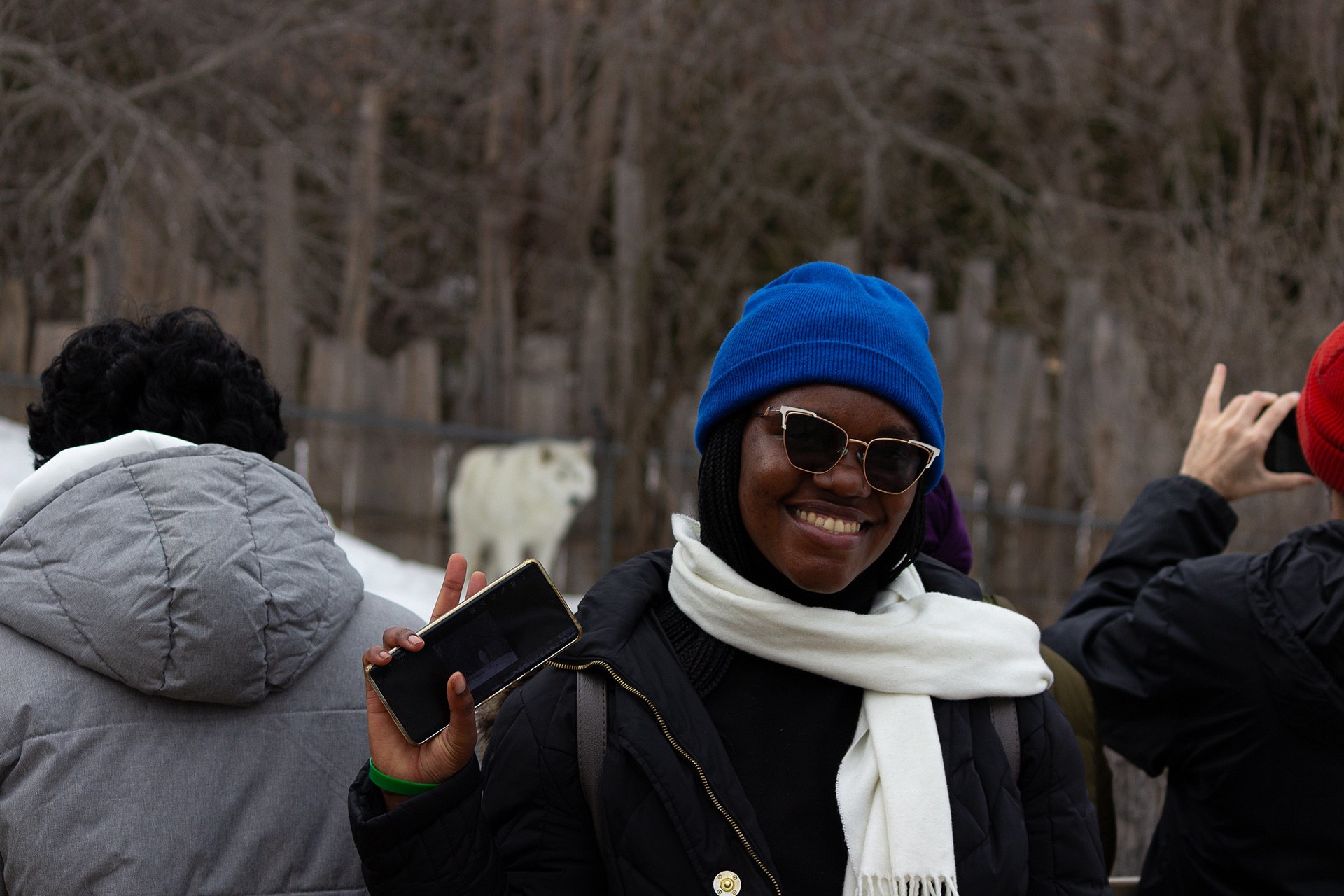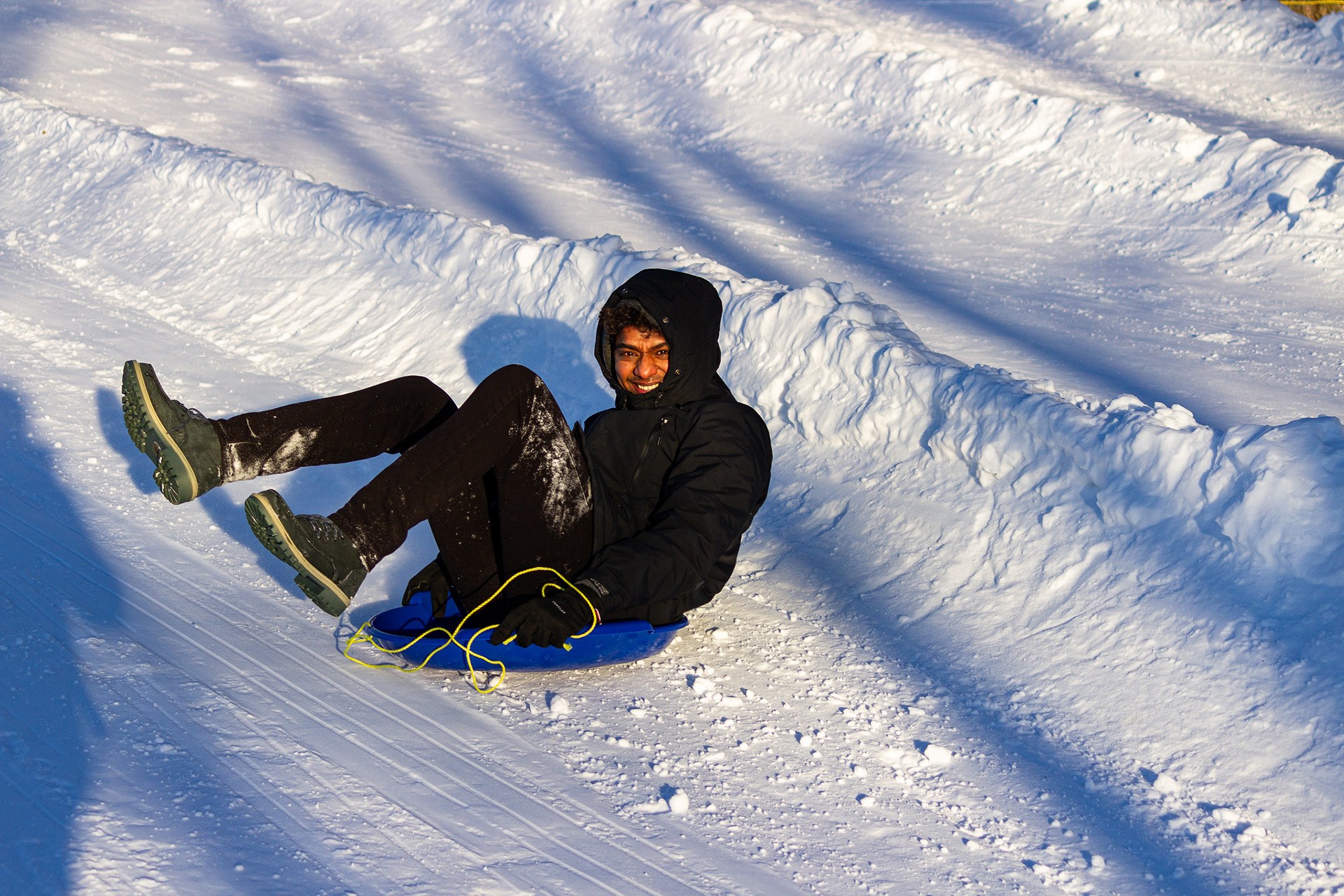Winter in Montreal
How does one face Canadian winter? The ISO asked Concordia students for their advice.
General advice
- Watch out for slippery sidewalks and steps
- If you rent you must keep your stairs and walkways clear of snow. Use de-icing salt, sand, or kitty litter to create traction on surfaces.
- Wear crampons/ice cleats over your boots to avoid falls.
- You can find crampons in most pharmacies in Montreal.
- Stay physically active! It will improve your mood maintain your energy.
- Check out Concordia's sports and recreation activities.
- Use Concordia’s Health Services if you ever feel ill.
- Be sure to get some sun on occasion.
Clothing

During Montreal winters, temperatures can go down to -30°C, which means that you need to dress warm. You will need:
- a big winter coat
- insulated gloves or mittens
- a cozy hat
- a scarf for your neck
- insulated boots (recommend waterproof or water-resistant)
- thick socks
Dress in multiple layers of clothing. You can always take layers off when you are too warm.
Transportation
Winter here means snowed-in streets and more traffic. As a general rule, give yourself extra time to get to school.
Concordia’s shuttle bus runs all year no matter the weather, so make sure you use it to get from one campus to the next!
Take advantage of the metro (underground subway) system: Montreal is home to the largest underground city with access to restaurants and shopping, all connected by stops on the orange and green line. You can access most Concordia buildings downtown through Guy-Concordia metro without going outside.
Heating your home
If heating is included in your rent:
- If you don’t control the heating and your apartment is too cold, don’t hesitate to speak to your landlord.
If you pay for it yourself:
- Control your own thermostat, meaning that you can turn your heat up and down.
- Lower your thermostat by 2 or 3 degrees when you leave your house to save on the electricity bill.
- Consider a payment arrangement to spread your annual electricity bill over several installments.
Saftey first!
- Be careful around space heaters, as they may be possible fire hazards.
- Walkways and exits must always be cleared of snow in case of an emergency.
Frozen pipes: what they are and how to prevent them
What are frozen pipes?
In extreme cold (as low as -30°C), water can freeze inside your pipes, blocking the flow and potentially cracking the pipes at weak points like joints or valves. This can lead to bursts and extensive damage.
How to prevent frozen pipes
- Keep the heat on
- A comfortable room temperature is around 20°C (70°F). When you go out turn down your thermostat two or three degrees lower; you will save on energy costs but your home will be warm enough to protect your pipes.
- Insulate your pipes
- Check to see where pipes are vulnerable to exposure from the cold; this can include under cabinets or other hard to reach places that may be insulated.
- Wrap your pipes with insulation foam (available at hardware stores) to try and prevent bursting.
- You can also leave your cabinet doors open to ensure they get some of the heat from your apartment.
- Communicate with your landlord
- Inform your landlord of any gaps in window caulking, poorly insulated rooms, and any other issue that could lower the temperature in your apartment.
- Ask your landlord if the building has had issues with pipes freezing in the past so you know what to look out for.
- Municipalities (cities) have specific by-laws that specify the minimum temperature for apartments, so make sure to follow the guidelines set out by your landlord.
Report any problems with CSU Off-campus housing.
Winter activities

It's possible to have fun in winter! Try some of our favourite activities.
- Skating Rinks (Beaver Lake, Old Port, Parc LaFontaine, Atrium Le 1000, Rideau Canal Skateway)
- Winter activities with the ISO (ISO Social)
- Downhill Skiing (Mont-Tremblant, Mont Saint-Sauveur, Ski Bromont)
- Cross Country Skiing (Mont-Royal)
- Visiting sugar shacks and trying out maple taffy
- Going to Winter festivals (Fêtes des neiges, Montréal en Lumière, IglooFest…)
- Building snowmen
- Sledding and snow-shoeing at Parc du Mont-Royal.

